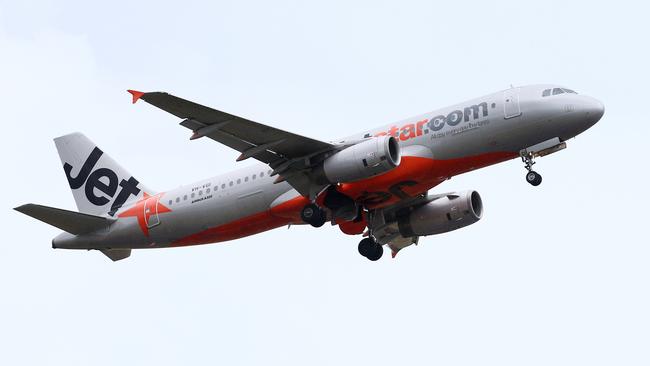Jetstar investigation to probe debris possibility
An investigation into a flaming engine on an aborted Jetstar flight will consider whether debris on the runway was the cause.

An investigation into a flaming engine on an aborted Jetstar flight will examine whether debris on the runway of Brisbane Airport may have triggered the incident.
The A320 had just begun its takeoff run for a flight from Brisbane to Cairns last Friday when the crew received a right engine stall warning and the aircraft pitched to the right.
The pilots rejected the takeoff and came to a stop on the runway, where air traffic controllers noticed a flash coming from the right engine.
“Did you see anything coming from the Jetstar aircraft at all on taxi?” ATC asked the crew of another aircraft, who confirmed they had seen flames.
“Hold position, rescue and firefighting services are on their way out to you.”
The plane was inspected on the runway, and given the all clear to return to a parking bay where both engines were shut down.
An initial engineering inspection found a small amount of debris in the right engine’s turbine exit duct, with a further examination revealing damage to the tips of some of the blades in the compressor section.
A Jetstar spokeswoman said the decision was made to replace the engine, with the aircraft remaining in Brisbane until that could occur.
Passengers on the flight, then travelled on a replacement aircraft which took off two-hours after the original departure time.
As part of its investigation, the Australian Transport Safety Bureau would interview the flight crew, and review maintenance documentation, recorded flight data and the post-incident engineering inspection report for the right engine.
Investigators would also seek to determine the source and nature of the debris found in the engine.
Foreign object debris or FOD is treated very seriously by airports, which undertake regular runway and taxiway inspections to ensure they are free of any items that could pose a threat to the safe operation of aircraft.
In 2000, a strip of metal left on the runway of Charles de Gaulle Airport in Paris led to the catastrophic Concorde crash, after a tyre was punctured sending pieces of rubber into a fuel tank.
Fire from the ruptured tank and other damage to the aircraft resulted in the crash, killing all 109 people on board and four on the ground.
The final ATSB report on the Jetstar incident was expected to be delivered within the next 12-months.
Should a safety critical issue be identified in the meantime, the relevant parties would be notified.







To join the conversation, please log in. Don't have an account? Register
Join the conversation, you are commenting as Logout